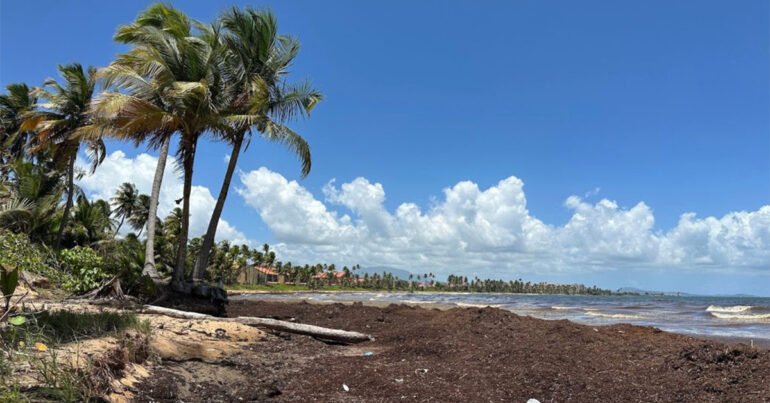Puerto Rico is stepping up its fight against Sargassum. A record-breaking 40 million metric tons of the seaweed flowed through the tropical Atlantic this year, overwhelming shorelines across the region and hitting Puerto Rico’s coasts especially hard. By the end of June, the situation had grown so severe that Governor Pedro Pierluisi signed an executive order declaring a state of emergency, accelerating efforts to clear and manage the seaweed surge.
Now, federal and local agencies are joining forces to expand Puerto Rico’s response. The National Centers for Coastal Ocean Science’s Harmful Algal Bloom Event Response Program is funding a major boost to cleanup and monitoring operations for the rest of the 2025 season and into 2026. The move is designed to give Puerto Rico’s coastal managers both immediate support and better data to prepare for the next wave.
A Mounting Coastal Challenge
Sargassum influxes have become a defining environmental challenge for Puerto Rico. Since 2011, warmer waters and changing ocean currents have contributed to the growth of massive mats of the seaweed in the Atlantic — sometimes stretching thousands of miles — that eventually drift into coastal waters.
When they arrive in large volumes, these blooms are officially classified as harmful algal events. The impact can be devastating: thick accumulations deter visitors, disrupt fisheries, damage fragile ecosystems and create public health risks as the seaweed decomposes. Safe collection and disposal have proven especially difficult, requiring heavy equipment, specialized handling, and disposal sites that don’t damage coastal habitats further.
For Puerto Rico, the timing has been particularly painful. The summer influx coincides with peak tourism months, putting added pressure on municipalities and beach operators already grappling with heat waves and infrastructure strain.
Expanding the Response Network
The new federally backed initiative is being led by Mar Caribe Consulting, working with the Puerto Rico Department of Natural and Environmental Resources and the Coastal Zone Management Program.
Six priority coastal sites around the island will be closely monitored for both Sargassum volume and water quality impacts during inundations. Scientists will also be analyzing the seaweed for heavy metal content — a key factor in determining how it can be safely handled, stored, or potentially reused.
The goal is twofold: strengthen real-time emergency response, and build a foundation for smarter, safer management strategies in the years ahead. Data collected will feed into improved predictive models, helping authorities anticipate major landings before they happen and adapt cleanup strategies more efficiently.
Looking Toward 2026
This expanded effort builds on previous NCCOS-supported work and reflects growing concern that large-scale Sargassum blooms are not a one-off event but a recurring seasonal reality for the Caribbean.
By combining rapid response funding with on-the-ground scientific research, Puerto Rico hopes to move from reacting to crises toward managing them with better foresight. Local officials say the results will guide new protocols for collection, disposal and reuse — critical steps for minimizing environmental damage and protecting coastal economies.
Caribbean Journal Staff
2025-09-30 17:41:00

